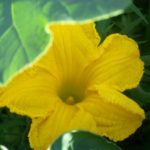 New Moon Blessings- March 2, 2022
New Moon Blessings- March 2, 2022
This article is part of my lunar blog post series. (Click here for details and past posts.)
I Ching Garden Connections
The I Ching or Book of Changes is an ancient Chinese wisdom tool and oracle. The basic principles of the I Ching are that the universe is in constant motion. Everything changes. By paying mindful attention to how things are changing, a wise person can choose when to act most effectively.
I have consulted the I Ching since high school and it does not disappoint. Time and again the oracle has helped me see difficult situations in a new light and consider options for action.
Images of nature and the green world are woven into the I Ching. I love that one of the original methods for consulting the oracle was with yarrow stalks, one of my favorite herbs. But the connection to gardens and plants goes much deeper. And I will return to that topic in a moment, but want to first give an overview of the I Ching itself if you are unfamiliar.
 Simplicity & Complexity in One Text
Simplicity & Complexity in One Text
Two lines – one solid and one broken – are the basis for the entire I Ching. How simple is that? Of course, that two-line binary code makes all computer programming possible so you can see how it can become complex.
Single lines join with two others to form trigrams. There are eight trigrams that represent elements or natural forces: Heaven, Earth, Wind, Thunder, Fire, Lake, Mountain, and Cloud.  Next the eight trigrams are combined (one over the other) into groups of six lines, creating 64 combinations or hexagrams – each representing a moment of flow in the universe. When we consult the I Ching we will get a reading of one or two hexagrams. (See Resources below on how to interact with the I Ching.)
Next the eight trigrams are combined (one over the other) into groups of six lines, creating 64 combinations or hexagrams – each representing a moment of flow in the universe. When we consult the I Ching we will get a reading of one or two hexagrams. (See Resources below on how to interact with the I Ching.)

When interpreting the reading, one considers how the eight elements represented by the trigrams might act upon one another. This involves both real and allegorical effects. For example, the hexagram “Great Harvest” is made of the trigram Fire over Heaven. The meaning encompasses the idea that the sun (fire) shines down on humanity (heaven) and creates abundance.
Back to Gardens and the Green World
The text often relies on plants and the natural world to illustrate a point. In The Complete I Ching, Master Alfred Huang explains how the hexagram for Heaven contains the concepts basic to life: sprouting, growing, blooming, and bearing fruit. It embraces the idea of movement and change and one season morphing into the next. And it uses images from the garden to do so.
I like this translation because Huang provides historical and cultural explanations for both the trigrams and the accompanying Chinese characters. And it illuminates the text’s connection to the natural world. This has been tremendously helpful in increasing my understanding of the text.
Here are two additional examples from his translation highlighting garden connections.

Hexagram #3, Beginning, is composed of the trigrams clouds over thunder. Some translations identify this as Difficulty at the Beginning, but in Huang’s translation, he simply uses Beginning. The Chinese character looks like a tiny seedling emerging from the soil. Gardeners know that seedlings are susceptible to the elements. Clouds and thunder indicate a storm. So this seedling could be in trouble. But look at how deeply rooted this plant is. And so one simple interpretation is that new projects benefit from being deeply rooted and having perseverance.

The second example is hexagram #47 Exhausting. It is composed of the trigrams water below lake. The water has been drained away and the lake is empty or exhausted. The Chinese character is a symbol of a tree enclosed in a kind of box, limiting its growth. This hexagram refers to a difficult situation but the tree is still alive in the box and with perseverance will be able to overcome.
It’s impossible of course to convey the complexity, beauty, and imagery of the I Ching in a short blog post so I hope you’ll check out some of the resources listed below.
Working with the Oracle
 Remember this is not a fortune telling device. We consult the oracle to gain insight. The messages are meant for contemplation. It is good to check in with ourselves. What are we bringing to the table and what is our frame of mind? When we get a reading, we can sit with it and ask how it informs our life and our situation. What parts make sense? What parts challenge us to see things in a different way?
Remember this is not a fortune telling device. We consult the oracle to gain insight. The messages are meant for contemplation. It is good to check in with ourselves. What are we bringing to the table and what is our frame of mind? When we get a reading, we can sit with it and ask how it informs our life and our situation. What parts make sense? What parts challenge us to see things in a different way?
My Take Aways from the I Ching
The I Ching was created by mindfully attending to the natural world and the flow of moments. It invites us to do the same.
Often there are forces totally out of our control that we need to respond to. The wise person is thoughtful about how and when to intervene.
Even in seemingly dark and impenetrable situations, light is working to emerge.
And this from the Taoist Book of Days, “Evil is best transformed by one’s energetic pursuit of that which is good.” And that is the mindful focus for this post. It’s not the passive pursuit of good or the occasional pursuit of good – it’s energetic. What does that mean in your life?
 Resources for further Exploration
Resources for further Exploration
Books I’ve found helpful:
The Complete I Ching, translated by Master Alfred Huang
I Ching: The Book of Change: translated by John Blofeld
The I Ching or Book of Changes translated by Richard Wilhelm and Cary F. Baynes
The I Ching Workbook by R. L. Wing
Taoist Book of Days by Khigh Dhiegh – this one appears to be out of print but if you can find a used copy, you’ll find good information
There are lots of online resources. Here are a few I recommend:
I Ching with Clarity a website devoted to the I Ching – you can do an online reading and find lots of information.
How to Use Coins to Consult the I Ching from Wiki How
Also check out this podcast The I Ching & Nature at the website ClassicChineseMedicine.org
For a detailed explanation of the eight trigrams see this post by Michael Garofalo
If you’d like to sign up to be notified of future blog posts in this series email me at joanncalabrese@gmail.com



